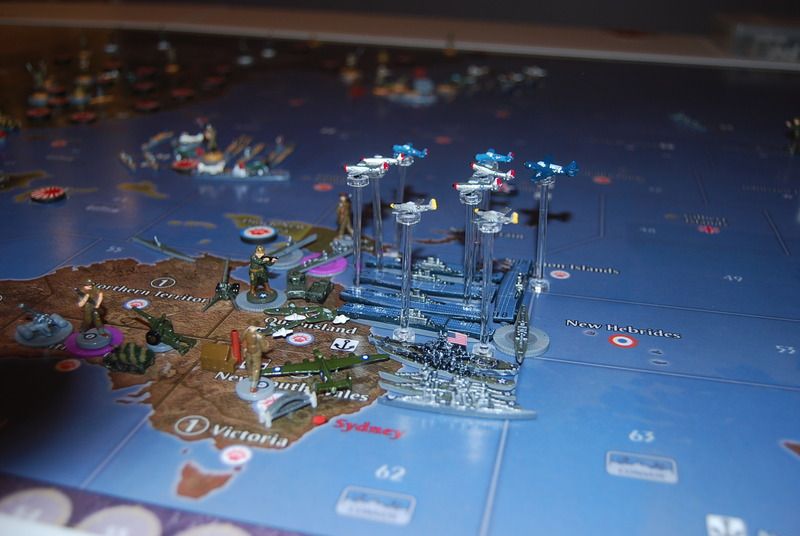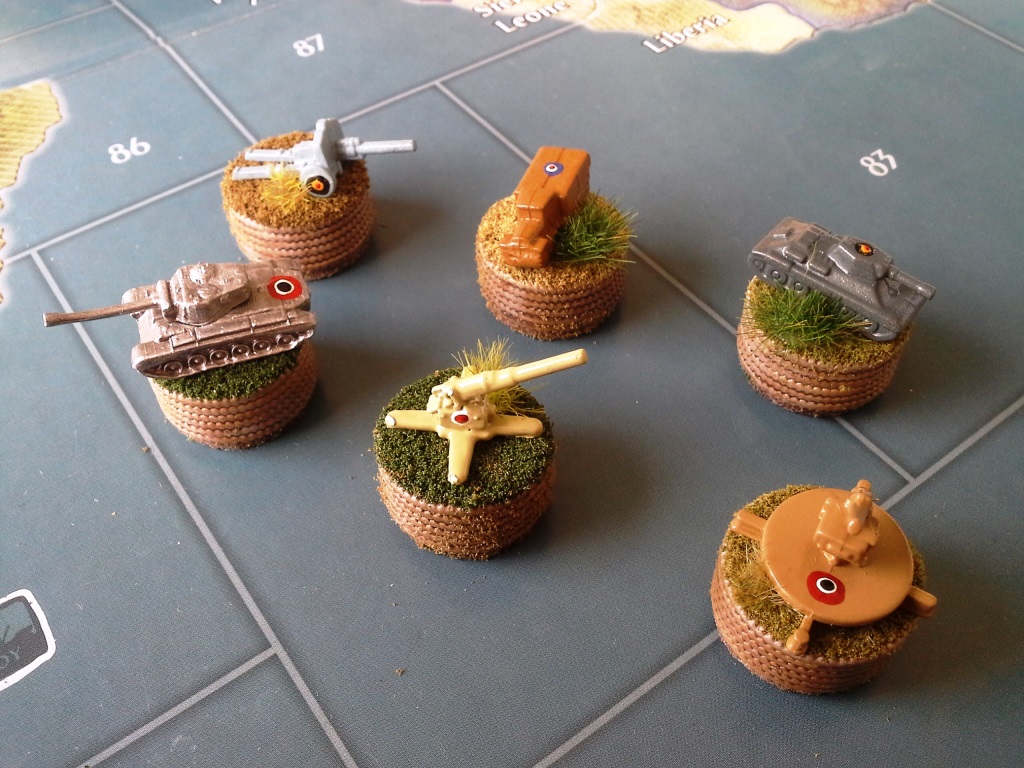Hey everybody! I have decided to add Poland as an A&A player in 1940, even though it fell in 1939. Many brave men fought on and hated surrender. Poland starts off with 0 IPC’s because its capital, Warsaw, is in enemy hands and it’s one of G40’s many victory cities. I know the game takes place in June 1940. The Poles were brave fighters under French, then British command, as well as Soviet command. Anyway, I add one gray (Poland’s colors) plane to the United Kingdom, 1 infantry in Syria. As soon as France falls, the unit in Syria will escape to Transjordan.
Why is Iraq a “pro-Axis” neutral, even though it was under British control? Iraq was a British vassal state at the time. The British had units stationed in Iraq in 1940. Maybe replace Iraq with Spain to balance out the pro-Axis neutrals? Spain had volunteers on the Eastern Front in what was called the Blue (Azul in Spanish) Division. Franco was thinking of joining Hitler in June 1940 to allow him to blitz into Gibraltar. German ships were serviced in Spanish ports. I think that there should be 2 UK infantry in Iraq and that it should be under the UK Europe economy, plus 1 UK fighter in Iraq.
The Polish forces in Soviet gulags will escape to Iraq, after being freed by the Soviets to fight for the British. 1 Soviet infantry will be placed on Iraq and the Soviet Union does not own the territory, the UK does. The British used their units in Iraq to put down the pro-Axis rebellion in 1941.
Since everything 1941, takes place in 1940, we’ll do that. Southern France will be under the control of Germany or Italy and 1 French infantry shall be kept on Southern France. The French units in Southern France will fight against Germany or Italy invades the territory, as normal. After Southern France falls 1 French infantry shall be placed there to represent Vichy France. The France player will go down 3 IPC’s and Germany will go up 3 or Italy. The French units in the setup in Southern France will fight as normal units against the Axis. After they are destroyed by Germany or Italy, Italy or Germany puts their roundel on Southern France and IPC chart is adjusted accordingly.
After the territory’s French units are destroyed by the Axis. the France player will place 1 infantry on Southern France after Germany’s non combat movement phase or Italy’s. But the territory will be controlled by either Germany or Italy and the IPC’s go to the Germany or Italy player, after Germany takes France and France’s IPC’s will go to Germany or Italy. On Germany’s turn, France shall be invaded and fall to the Axis.
Then the artillery will be removed from Southern France and replaced with only 1 French infantry unit and the territory shall be placed under the Germany players control, after placing its roundel on Southern France. Southern France can also be invaded on Italy’s or Japan’s turn.
In the Global setup, after France has surrendered her IPC’s, Japan shall place 2 infantry on French Indo China for free, and Japan’s roundel, during Germany’s collect income phase on the turn that France falls.
1 Polish destroyer shall be placed in SZ 110 for free. After the combat phase is complete for Germany on turn 1, the 1 French infantry will be placed on Southern France and Japan shall place 2 infantry on French Indo China, for free. Just trying to simplify Vichy here and the Polish Forces in Exile.
The French units in French Indo China will be destroyed by Japan, after Germany’s combat phase is completed. Japan shall get French Indo China and this will not affect relations between them and the United States for Japan’s collect income bonus.
France will not be allowed to buy any new units of any kinds, as their capital of Paris is in enemy hands any units bought by France will be removed from BEING placed on the board and will go back in the box. This is on France’s turn or any of their turns, once an Axis player gains control of France and when France’s IPC income is surrendered after France falls, during Germany’s turn at the end of their collect income phase.
In the Global game, Germany must invade France first during Germany’s turn. Germany attacks France first.












